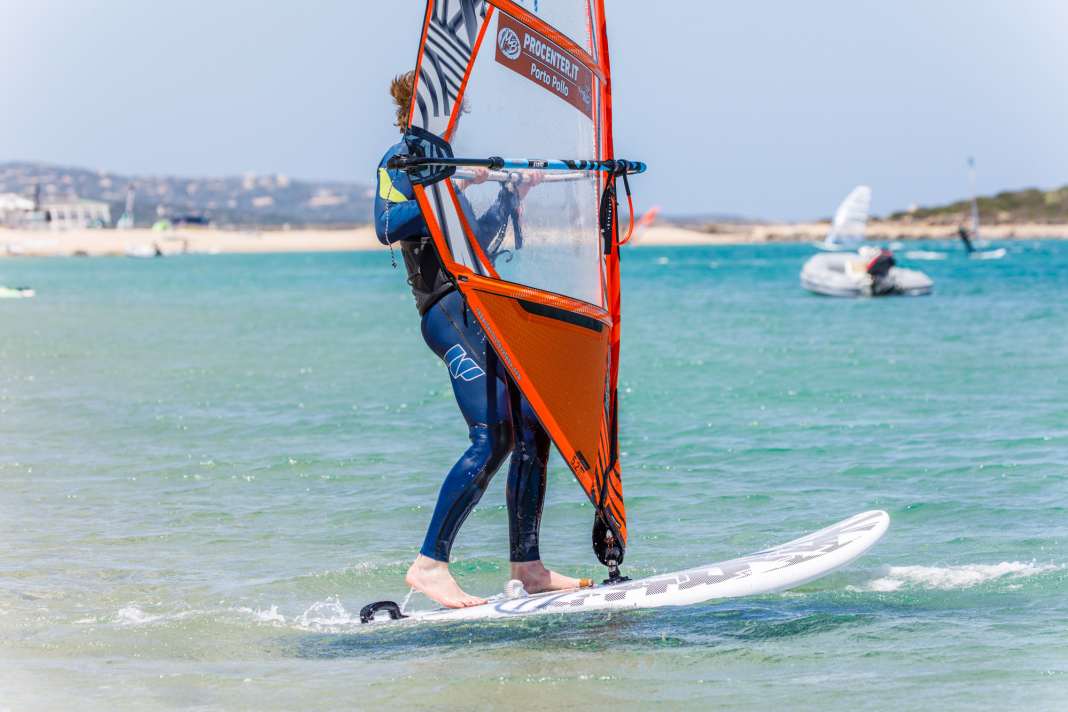





But of course there's a more elegant way, with the cross! As you can't go directly upwind in windsurfing - as in all other wind-driven sports - the way back to windward is a diversion: with several successive upwind courses, you zig-zag to windward, so to speak.
Crossing is also known as levelling, you work to regain the height lost due to wind and waves compared to the starting point. Large boards with a daggerboard or wind SUPs with a centre fin are ideal for learning to cross, as the daggerboard or centre fin, like the keel of a sailing boat, inhibits lateral drift to leeward.
One of the most common mistakes when learning to cross is to set a course in the direction of the desired destination, i.e. to windward, directly at the start. The problem is that although the board theoretically points in the desired direction, it never gets going. Therefore, accept that you cannot reach a windward destination directly, but first gain a little momentum and stabilise your ride.
In the gallery above, we explain how to cross step by step!
The most important aspect of cruising is orientation on the water. After luffing, find a fixed point that you consistently aim for - this should be visibly further upwind than the course the board was on at the start, but not too far upwind either.
The tack is the method of choice for turning round, which will also take you a little way to windward. Find out what you need to bear in mind here here.
Your checklist for cruising while windsurfing
- 1. orientate: Set the basic position, the sail is exactly on its side and is now like a flag. You have two fixed points: The wind direction and the course that your board automatically takes (half-wind course). Find a fixed point on this half-wind course, take off and gain momentum.
- 2. luffing: Luve on, let the board turn 30-40 degrees to windward from the half wind course to the closehauled course and set the boom horizontally again.
- 3. find a fixed point: Find a new fixed point on a closehauled course and correct your course with small steering movements if your board deviates unintentionally from the fixed point.
Pressure on the edge can replace the daggerboard
If your board has a daggerboard and you are not planing, unfolding the daggerboard is the most effective way to reduce lateral drift. Especially on boards without a daggerboard, however, going upwind can be tedious at the beginning, as the lack of resistance in the water increases the lateral drift. A good trick for cruising on boards without a daggerboard is therefore to deliberately push the windward edge a little deeper into the water. To do this, simply place your front foot slightly away from the centre line towards the windward edge.
